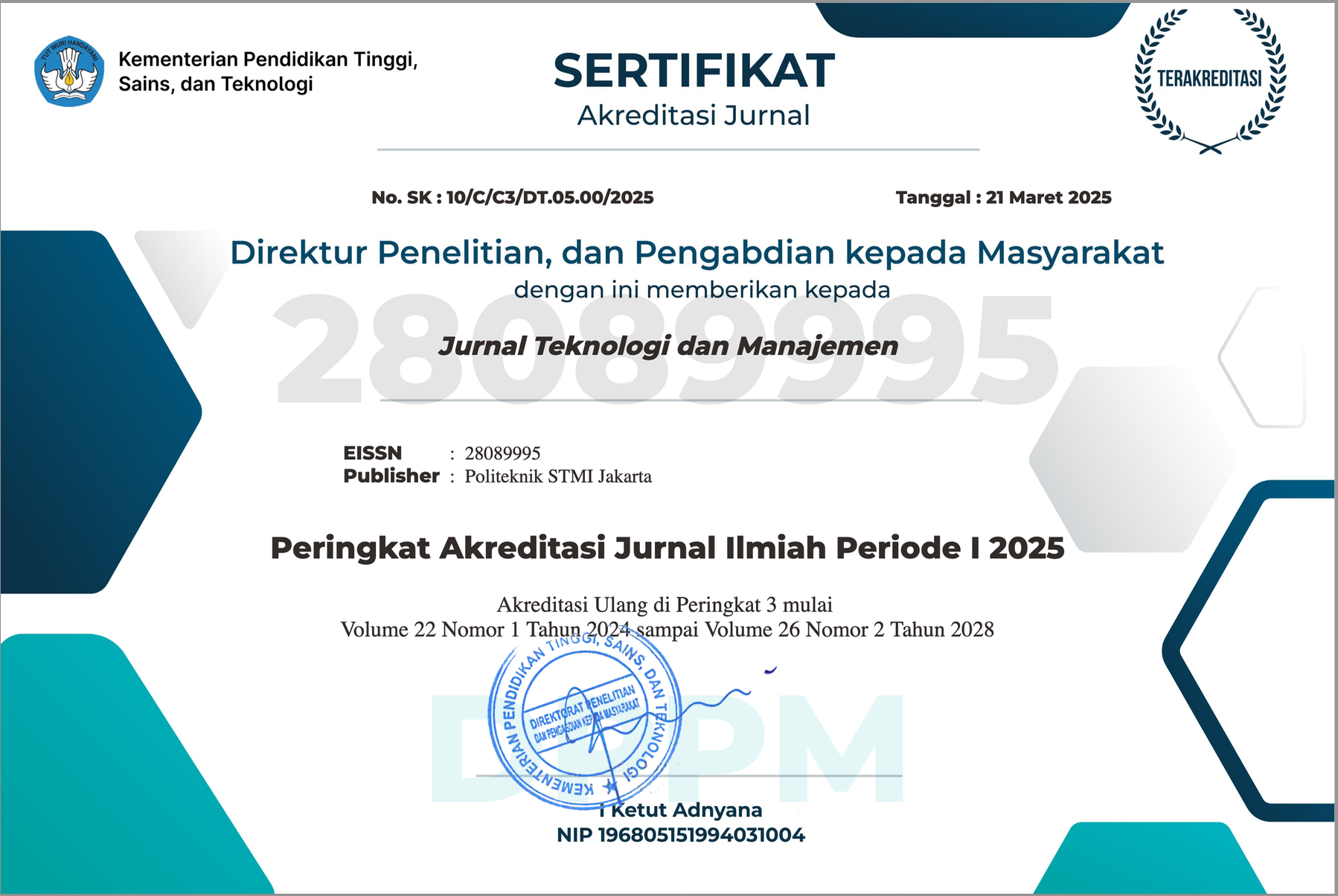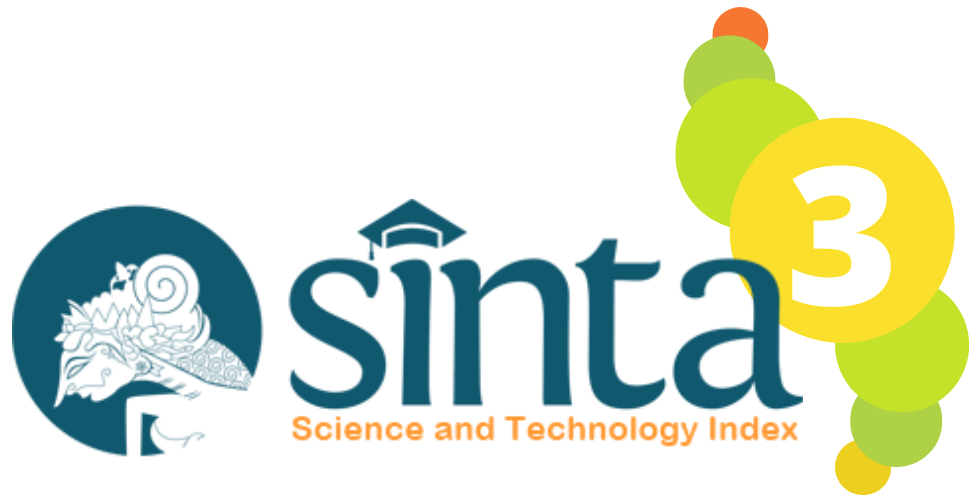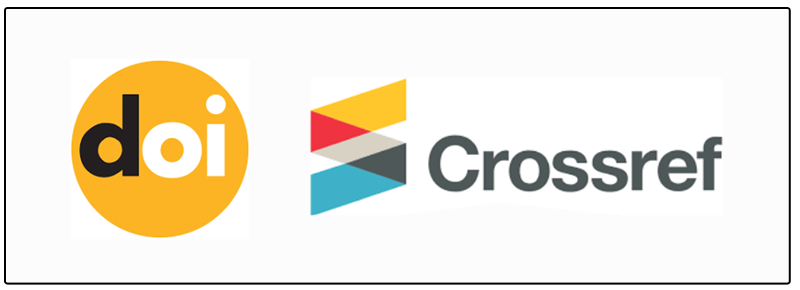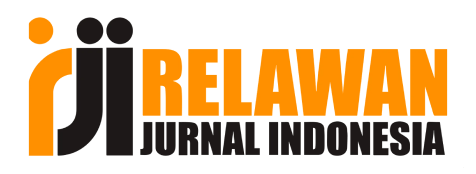Editorial Policies
Focus and Scope
Jurnal Teknologi dan Manajemen is a scientific journal published by Politeknik STMI Jakarta and discusses the latest trends in industrial management. The scope details received at JTM include:
- Industrial Engineering
- Manufacture Engineering
- Quality Engineering
- Production Planning and Inventory Control
- Logistics
- Procurement
- Polymer Chemistry
- Marketing and Finance
- Human Resource Management
- Information System
- IT Governance
- Enterprise Resource Planning
- Artificial Intelligence
- E-Business
- Design and Technology Tooling in Manufacturing
Peer Review Process
Publishing articles on JTM only depends on scientific validity and coherence which are assessed by our editors and / or peer reviewers, who will also assess whether the writing can be understood and whether the work is a useful contribution in the field. JTM appreciates the efforts and suggestions made by the reviewers.
Initial evaluation of manuscripts
The editor will first evaluate all submitted manuscripts within a maximum of 4 weeks. Although rare, it is quite possible for an outstanding manuscript to be received at this stage. Those rejected at this stage were not original enough (too high similarity level), had serious scientific deficiencies, or were outside the aims and scope of JTM. Those that meet the minimum criteria are forwarded to the reviewers for review. It usually takes up to 8 weeks.
Type of peer review
Submitted manuscripts will generally be reviewed by two to three experts who will be asked to evaluate whether the manuscript makes scientific sense, whether it is a duplicate of an already published work, and whether or not the manuscript is clear enough to be published. The method is editorial review and double blind peer review.
Review reports
Reviewers were asked to evaluate whether the manuscript:
- Be original by clearly stating goals and gaps
- Does it make sense methodologically
- Follow appropriate ethical guidelines
- Have results/findings presented clearly and support conclusions
- Correctly reference previous relevant work/research
Decision
The reviewer gives input to the editor, who is responsible for the final decision to accept or reject the article. Editors will make decisions based on this report and, if necessary, they will consult with members of the Editorial Board. The editor's decision is final.
Becoming a Reviewer
If you are not a current reviewer for JTM but would like to be added to the reviewer list, please contact us. The benefits of a review for JTM include the opportunity to view and evaluate recent work in related research areas at an early stage, and to be recognized on our list of reviewers. You may also cite your work for JTM as part of your professional development requirements. JTM reviewers are volunteers who contribute their expertise to science, so there is no financial payment.
Publication Frequency
JTM is a journal that is published twice a year (twice a year). Publication schedule in February and August of the current year.
Open Access Policy
This journal provides immediate open access to its content on the principle that making research freely available to the public supports a greater global exchange of knowledge.
Benefits of open access for the author, include:
- Free access for all users worldwide
- Increased visibility and readership
- No spatial constraints
Works/articles in this journal are bound to Creative Commons Attribution-NonCommercial 4.0 International License License.
Fees
No fees are incurred for article processing, submission, or reviewing articles.
Submission Charge: Rp 0,-
Article Processing Charge: Rp 0,-
Based on the above conditions, we are fully exempt for authors from developing countries if they need to submit papers to JTM.
Please email us expressing your interest in a hard copy and receive further details.
Publication Ethics Statement
Journal of Technology and Management (JTM) is a journal that uses the peer-review method. This statement explains the ethical behavior of all parties involved in the act of publishing articles in this journal, including the author, chief editor, editorial board, peer-reviewer, and publisher (STMI Jakarta Polytechnic). This statement is based on the statement COPE’s Code of Conduct and Best Practice Guidelines for Journal Editors and COPE's Core Practices.
Ethical Guideline for Journal Publication
Publishing peer-reviewed articles in JTM journals is an important foundation in developing a coherent and respected knowledge network. This is a direct reflection of the quality of the work of the authors and the institutions that support them. Peer-reviewed articles support and embody the scientific method. Therefore, it is important to agree on standards of expected ethical behavior for all parties involved in the act of publishing: authors, journal editors, peer reviewers, publishers and the public.
Publisher and Editor
STMI Jakarta Polytechnic as a JTM issuer takes trusteeship duties over all stages of issuance very seriously and we recognize ethical and other responsibilities. We are committed to ensuring that advertising, reprint or other commercial revenue does not impact or influence editorial decisions. In addition, the STMI Jakarta Polytechnic and the Editorial Board will assist in communication with other useful and necessary journals and/or publishers.
Publication decision: JTM journal editors are responsible for deciding which articles should be published to the journal. The intended validation of the work and its importance to researchers and readers should always drive those decisions. Editors may be guided by the policies of the journal's editorial board and limited by legal requirements that will apply regarding libel, copyright infringement and plagiarism. The editor may confer with other editors or reviewers in making this decision.
Fair play: An editor at any time evaluates manuscripts for their intellectual content without regard to the author's race, gender, sexual orientation, religious belief, ethnic origin, nationality, or political philosophy.
Confidentiality: Editors and editorial staff must not disclose any information about submitted manuscripts to anyone other than the appropriate authors, reviewers, potential reviewers, other editorial advisors, and publishers.
Disclosure and conflict of interest: Unpublished material disclosed in submitted manuscripts may not be used in an editor's own research without written consent from the author.
Reviewers
Contribution to Editorial Decisions: Peer review assists editors in making editorial decisions and through editorial communication with authors can also assist authors in improving papers.
Discretion: Selected referees who feel they are not qualified to review research reported in a manuscript or find that a rapid review is not possible should notify the editor and excuse themselves from the review process.
Confidentiality: Any manuscripts received for review must be treated as confidential documents. They may not be shown or discussed with others except as permitted by the editors.
Standards of Objectivity: Reviews must be conducted objectively. The author's personal criticism is inappropriate. Referees must express their views clearly with supporting arguments.
Acknowledgment of Sources: Reviewers must identify relevant published work that has not been cited by the author. Any statement for which observations, derivations, or arguments have been previously reported must be accompanied by relevant citations. Reviewers should also call the editor's attention to any similarities or overlap between the manuscript under consideration and other published papers of which they are personally aware..
Disclosure and Conflicts of Interest: Privileged information or ideas obtained through peer review must be kept confidential and not used for personal gain. Reviewers should not consider manuscripts in which they have a conflict of interest resulting from competitive, collaborative, or other relationships or connections with any of the authors, companies, or institutions associated with the paper.
Authors
Reporting standards: Authors of original research reports must provide an accurate account of the work performed as well as an objective discussion of its significance. The underlying data must be presented accurately in the paper. A paper should contain sufficient detail and references to enable others to replicate the work. Statements that are deceptive or intentionally inaccurate constitute unethical behavior and are unacceptable.
Data Access and Retention: Authors are required to provide raw data with respect to the paper for editorial review, and must be prepared to provide public access to such data (as per ALPSP-STM Statement on Data and Databases),where possible, and in any case be prepared to retain such data for a reasonable time after publication.
Originality and Plagiarism: Authors must ensure that they have written entirely original work, and if authors have used the work and/or words of others, these have been properly cited or cited.
Multiple, Redundant, or Concurrent Publication: An author generally should not publish manuscripts describing substantially the same research in more than one journal or primary publication. Submitting the same manuscript to more than one journal simultaneously is unethical and unacceptable publishing behavior.
Acknowledgment of Source: Proper acknowledgment of the work of others should always be given. Authors should cite publications that are influential in determining the nature of the work reported.
Authorship of Papers: Authorship should be limited to those who have made a significant contribution to the conception, design, execution, or interpretation of the study being reported. All who have made significant contributions must be listed as co-authors. If other people have participated in certain substantive aspects of the research project, they must be acknowledged or listed as contributors. The associated author must ensure that all suitable co-authors and no inappropriate co-authors are included on top of the paper and that all co-authors have viewed and approved the final version of the paper and have approved its submission for publication.
Disclosure and Conflict of Interest: All authors must disclose in their manuscript any financial or other substantive conflict of interest that could be construed to influence the outcome or interpretation of their manuscript. All sources of financial support for the project must be disclosed.
Fundamental errors in published work: When an author discovers a significant error or inaccuracy in his or her self-published work, it is the author's obligation to immediately notify the editor of the journal or publisher and work with the editor to retract or correct the paper.
Plagiarism and Retraction Policy
Plagiarism and Retraction Policy
The JTM Editorial Board recognizes that plagiarism is unacceptable and has therefore established the following policy stating specific (penalty) measures after identifying plagiarism/similarity in articles submitted for publication on JTM. JTM will use originality checker software iThenticate as a tool to detect text similarity in article manuscripts and the final version of the article which is ready for publication. A maximum of 25% similarity is allowed for submitted papers. If we find more than 25% similarity index, the article will be returned to the author for correction and resubmission.
Definition:
Plagiarism involves "the use or imitation of another author's language and thought and representation of them as one's own original work."
Policy:
Papers must be original, unpublished, and not awaiting publication elsewhere. Any material taken verbatim from other sources needs to be clearly identified as different from the current original text by (1) indentation, (2) use of quotation marks, and (3) identification of the source.
Any text in excess of fair use standards (defined here as more than two or three sentences or its equivalent) or graphic material reproduced from other sources requires permission from the copyright holder and, where applicable, the original author and also requires identification source; for example, previous publications.
When plagiarism is identified, the Editor-in-Chief is responsible for reviewing the paper and will approve steps according to the level of plagiarism detected in the paper according to the following guidelines:
Plagiarism Rate
Minor:
Short passages from other articles are plagiarized without any important data or ideas taken from other papers
Action: A warning is given to the author and a request to amend the text and cite the original article is properly made
Medium: Most papers are plagiarized without proper citation to the original paper
Action: The submitted article is rejected and the author is prohibited from submitting further articles for one year
Severe: Most papers are plagiarized involving reproduction of original results or ideas presented in other publications
Action: Papers are rejected and authors are prohibited from submitting further articles for five years.
It is understood that all authors are responsible for the content of their submitted papers as they all read and understand JTM's Copyright and License Terms. If plagiarism is penalized, all authors will be subject to the same penalty.
If a second case of plagiarism by the same author is identified, a decision on the action to be taken will be made by the editorial board (Editor-in-Chief and Editorial Members) with the Chief Editor-in-Chief. Authors may be banned from submitting further articles forever.
This policy also applies to material reproduced from other publications by the same author. If an author uses previously published text or graphics, the appropriate paragraph or figure should be identified and the previous publication referenced. It is understood that in the case of review papers or tutorial papers, most of the material has been previously published.
Authors must identify the source of previously published material and obtain permission from the original author and publisher. If an author submits a manuscript to JTM with significant overlap with a manuscript submitted to another journal concurrently, and this overlap is discovered during the review process or after the publication of both papers, the editor of the other journal will be notified and the case will be treated as a case of severe plagiarism . Significant overlap means the use of identical or nearly identical graphics and identical or slightly modified text on one half or more of the paper. For self-plagiarism which is less than half of the paper but more than one-tenth of the paper, the case must be treated as intermediate plagiarism. If self-plagiarism is limited to the method section, the case will be considered minor plagiarism.
If an author uses some previously published material to clarify the presentation of new results, the previously published material should be identified and differences from these publications should be noted. Permission to republish must be obtained from the copyright holder. In the case of a manuscript originally published in conference proceedings and then submitted for publication at JTM either in identical form or in an expanded form, the author must identify the name of the conference proceedings and the date of publication and obtain permission to republish from the copyright holder. The editor may decide not to accept this paper for publication.
However, an author is permitted to use material from an unpublished presentation, including visuals, in a subsequent journal publication. For submitted publications that were originally published in another language, the title, date, and journal of the original publication must be identified by the author, and copyright must be obtained. Editors may accept publication of such translations to appeal to a wider audience. Editors can select specific published papers (for example, “historic” papers) for republishing to provide a better perspective of a series of papers published in a single issue of JTM. This republication must be clearly identified as such and the date and journal of the original publication must be given, and permission from the author and publisher must be obtained.
The JTM layout editor for Journals is responsible for maintaining the list of penalized authors and will check that no author of submitted papers is on this list. If a banned author is identified, the layout editor will notify the Chief Editor who will take appropriate action. This policy will be posted on the website with instructions for submitting the manuscript, and a copy will be sent to the author with a confirmation email upon initial receipt of their original manuscript.
Retraction and/or Corrections
JTM Editors will consider revoking publication if:
- They have clear evidence that the findings are unreliable, either as a result of gross errors (e.g., calculation errors or experimental errors) or as the result of fabrication (e.g., data) or falsification (e.g., image manipulation)
- That is plagiarism
- The findings have previously been published elsewhere without proper attribution to the prior source or disclosure to the editor, permission to republish, or justification (i.e., cases of overpublishing).
- It contains material or data without permission to use
- Copyright has been infringed or there is some other serious legal issue (e.g. defamation, privacy)
- It reports unethical research
- It has been published solely on the basis of a compromised or manipulated peer review process
- The author failed to disclose any major conflicts of interest (aka conflicts of interest) that, in the view of the editors, would unduly influence the interpretation of the work or recommendations by editors and peer reviewers.
Notice of revocation will:
- Linked to pulled articles where possible (i.e., in all online versions)
- Clearly identify the withdrawn article (for example, by including the title and author in the retraction header or citing the withdrawn article)
- Clearly identified as a retraction (i.e., distinct from other types of corrections or comments)
- Issued immediately to minimize harmful effects
- Freely available to all readers (i.e., not behind access barriers or available only to subscribers)
- State who retracted the article
- State the reason for the revocation
- Be objective, factual and avoid inflammatory languaget
Repeal is usually not appropriate if:
- The authorship is disputed but there is no reason to doubt the validity of the findings
- The main findings of this work are still reliable and corrections adequately address errors or concerns
- The editors either have inconclusive evidence to support the retraction or are awaiting additional information such as from an institutional investigation
- The author's conflict of interest has been reported to the journal after publication, but in the view of the editor, this is unlikely to affect the interpretation or recommendations or conclusions of the article.
JTM Editors will consider issuing a statement of concern if:
- they receive inconclusive evidence from research or publication of errors by the authors
- there is evidence that the findings are unreliable but the author's agency will not investigate the case
- they believe that an investigation into alleged misconduct related to publication has not been or will not be fair and impartial or conclusive
- investigation is under way but a decision will not be available for a considerable time to come
JTM editors will consider issuing corrections if:
- a fraction of reliable publications prove to be misleading (mainly due to honest errors)
- the list of authors/contributors is incorrect (an authorized author has been omitted or a person who does not meet the authorship criteria has been included
Reference Management
Every article submitted to JTM must use reference management software, e.g. Mendeley.





















